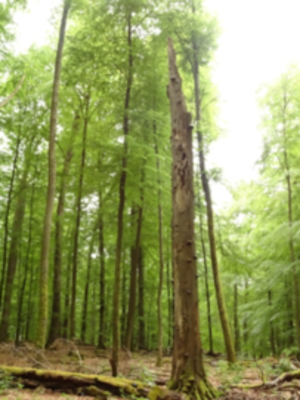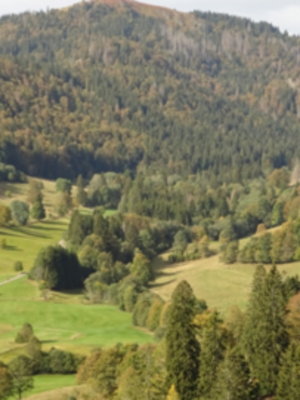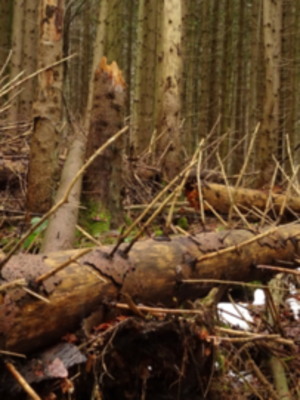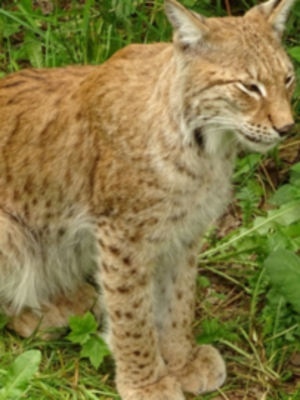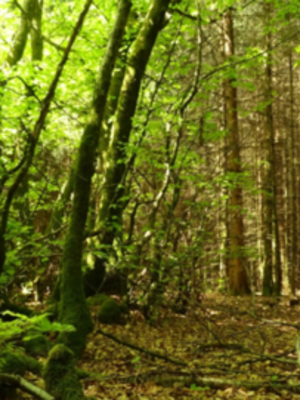Best Practice Knowledge Base
The "Best practice knowledge base" is a database of different types of resources to support forest restoration practitioners across Europe. It compiles technical guidelines, textbooks, and scientific articles and reviews that provide guidance on specific restoration practices. The contents of the database were selected based on an assessment of key priorities for restoration, as well and commonly used methods in various forest restoration projects across the European continent.
1. Afforestation and Reforestation
Afforestation and reforestation are key strategies in forest restoration. Afforestation involves establishing trees in areas that were not previously forested, while reforestation restores tree cover in deforested lands. Both approaches contribute to reversing deforestation, aiding in carbon sequestration, soil conservation, enhancing biodiversity, and improving ecosystem services, making them essential for sustainable forest management and climate change mitigation. Common practices include site preparation, selecting adequate tree species, promoting natural regeneration, seeding or planting, and ongoing maintenance measures such as watering, weeding, and monitoring for pests or diseases.
2. Enhancing Structural Diversity
In degraded, structurally poor stands, enhancing structural or functional diversity is crucial for rebuilding ecosystem complexity and resilience. Such stands often lack varied canopy layers, age diversity, and species richness, making them vulnerable to environmental stress and limiting their ecological functions. By increasing horizontal and vertical heterogeneity, diversifying tree ages, and introducing a higher variety of structural elements and tree species, forests can recover their ability to support wildlife, improve nutrient cycling, and withstand disturbances like pests, diseases, or extreme weather events, among others.
3. Enhancing Functional Diversity
Enhancing functional diversity in forest restoration is essential for building resilient ecosystems that can adapt to environmental changes. A diverse range of species with complementary traits improves nutrient cycling, soil stability, and resistance to pests and diseases. Functional diversity also enhances ecosystem productivity and recovery by ensuring that key ecological roles—such as nitrogen fixation, pollination, and carbon sequestration—are maintained. Effective restoration should prioritize species selection based on functional traits, and support interactions that sustain long-term ecosystem health.
4. Specific Habitats
Restoring specific habitats within forest ecosystems is essential for supporting biodiversity. Specific practices promote key microhabitats and structural features of natural forests often missing in degraded forests. Such techniques are used to replicate or accelerate natural processes, enabling the recovery of habitat conditions critical for a wide range of forest-dwelling species. These approaches contribute to more biodiverse and ecologically balanced restoration outcomes.
6. Enhancing Landscape Connectivity and Diversity
Enhancing landscape connectivity and diversity ensures the movement and genetic exchange of species, while supporting more resilient and adaptable ecosystems and landscapes. This approach involves creating corridors and linkages between fragmented habitats, allowing for the migration of wildlife and the dispersal of plant species, which is essential for maintaining healthy populations and genetic diversity. By promoting a heterogeneous landscape that includes a variety of habitats and successional stages, restored landscapes can better mimic natural systems, thus increasing ecological stability and resilience against disturbances. Ultimately, enhancing connectivity and diversity in the landscape fosters richer biodiversity, supports ecosystem services, and contributes to the long-term sustainability of both local and regional environments.
7. Risk Mitigation and Disturbance Prevention
Risk mitigation and disturbance prevention measures involve identifying potential threats like fire, pests, and invasive species and implementing strategies to reduce their impact. This includes using controlled burns to manage fire risks, monitoring pest populations, preventing browsing damage, and removing invasive species to protect native biodiversity. Such measures help maintain ecological balance and prevent long-term damage, ensuring that restored areas remain stable and functional.
8. Restoration of Key Species
Restoring key species is crucial for ecosystem balance and biodiversity enhancement. Keystone species significantly influence ecological dynamics, affecting many other species, while umbrella species offer conservation benefits to others due to their habitat needs. In Europe, bison, brown bears, beavers, and wolves exemplify these roles. Bison shape landscapes through grazing, bears contribute to seed dispersal and prey regulation, beavers create wetlands, and wolves control herbivore populations. Including these species in restoration efforts helps ecosystems regain natural structure and function, fostering long-term biodiversity and stability.
9. Restoration of Natural Processes and Ecosystem Preservation
Ecosystem preservation focuses on protecting habitats to enable natural succession and processes like nutrient cycling, water flow regulation, and natural disturbance regimes, such as fire and flooding, to occur. By maintaining these processes, ecosystems remain diverse and functional, adapting to changes such as those caused by climate shifts.





